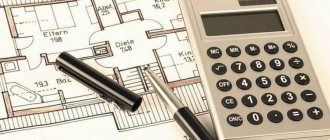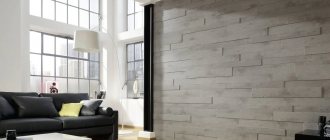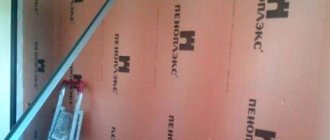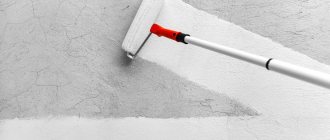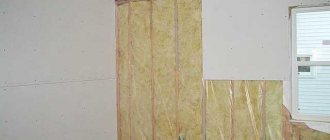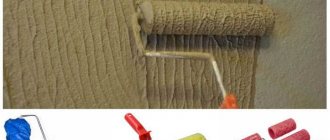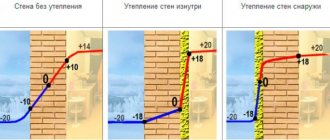Are you going to do renovations? Are you planning to furnish your apartment with new furniture? Are you thinking about selling or buying a home? In any of these cases, you need to determine the total area of the room. Of course, you can always look it up in the technical passport of the house, or use the help of a specialist.
But why not do all the calculations yourself? Knowing how to calculate the area of a room , you will be able to avoid mistakes that are often made when preparing technical documentation, and save a considerable amount that would be spent on the services of a professional craftsman.
Calculation of wall area for wallpapering
In order to determine the cost of wallpapering services by a private master, you need to know the total area of the walls and the perimeter of the room.
There are services that are calculated by square meters, such as gluing or priming. And there are services for which you need to know linear meters, for example, installing skirting boards or gluing borders. It is not necessary to use the services of measurers, just remember the school curriculum in geometry. This information will also help in calculating the required amount of wallpaper, glue, and so on. Wall area = room perimeter * ceiling height
First you need to measure the width and length of the room. Let's say right away that the obtained measurements of the length and width of the room must be converted into meters. For example, if the length of the room is 325 centimeters, then we count 3.25 meters.
Room length 4.75 meters Room width 3.25 meters
Let's calculate the perimeter of the room, which is equal to the sum of all sides.
P=(a+b)x2, where a and b are the width and length of the room. Therefore (4.75+3.25)x2=16 meters. The perimeter of our room is 16 meters. P=16 meters.
Now you need to measure the height of the room. We measure the height of the wall - we got 2.71 meters. h=2.71 meters.
To get the area of the walls, you need to multiply the perimeter of the room by the height of the walls.
S walls =Pхh, where h is the height of the walls. S walls = 16x2.71 = 43.36 meters.
The area of the walls of our room is 43.36 square meters. meters. S=43.36 m2.
From this figure you need to subtract the area of windows and doors - after all, there is no need to glue wallpaper there. We have one window in our room, the area of which is 1.95 m2 (1.3m x 1.5m). Door area 1.17 m2 (0.61m x 1.92m). The sum of the areas of windows and doors that are not involved in wallpapering is 3.12 m2.
The net area of the walls is 43.36 - 3.12 = 40.24 m 2.
In cases where the room is of non-standard size and does not look like a rectangle, you will have to calculate the area of each wall separately and then sum them up.
Windows and doors when calculating material
If you wallpaper or paint the walls of a room, you must subtract the area of windows and doors .
Windows and doors are usually rectangular in shape, and to determine their area it is enough to measure their width and height and multiply.
Example: in a room with a wall area of 36.84 square meters. m. there is a window measuring 1.30 by 1.40 m and a door measuring 0.80 by 2.05 m. The area of the window is 1.30 x 1.40 = 1.82 square meters. m, the door area is 0.80 x 2.05 = 1.64 sq. m. The area of the walls without windows and doors is 36.84 – 1.82 – 1.64 = 33.38 sq. m. m.
Or here's another clear example:
Table of wall areas for wallpaper and painting
Below is a table that will help you quickly determine the area of walls for wallpapering (or painting). To calculate the indicators, the typical area of windows and doors was used. Indicators of wall area vary according to the height of the ceiling of the room:
| Room area, m2 | Room ceiling height 2.50 m | Room ceiling height 2.70 m | Room ceiling height 3.0 m |
| 10 | 29 | 31 | 33 |
| 11 | 30,5 | 32,5 | 34,5 |
| 12 | 32 | 34 | 36 |
| 13 | 33,5 | 35,5 | 37,5 |
| 14 | 35 | 37 | 39 |
| 15 | 36,5 | 38,5 | 40,5 |
| 16 | 38 | 40 | 42 |
| 17 | 39,5 | 41,5 | 43,5 |
| 18 | 41 | 43 | 45 |
| 19 | 42,5 | 44,5 | 46,5 |
| 20 | 44 | 46 | 48 |
| 21 | 45,5 | 47,5 | 49,5 |
| 22 | 47 | 49 | 51 |
| 23 | 48,5 | 50,5 | 52,5 |
See also:
Source
Form of calculated premises
Square and rectangle
These are almost the most common room shapes in construction. Using the principle described above, you can find out their areas. If there are protrusions, columns or other architectural nuances, you need to measure and multiply them. As a result, the results of measurements of building elements are subtracted from the total area. The resulting figure is the correct value.
In addition to the frequently encountered square and rectangular rooms, there are also “irregularly shaped” rooms. These include the following.
To calculate the area of a square room, you need school knowledge and a minimum set of tools.
Trapezoidal
How to calculate the area of a trapezoid room? To do this, you need to measure its two parallel walls and the height (H) perpendicular to them.
The height should be measured in several places to ensure that the walls are parallel.
The formula by which the area of the trapezoid is then calculated:
S=1/2(A+B)*H
You will need a tape measure, a pencil or pen and a piece of paper.
With ledge
- Measure the length and width of the room without the overhang.
- Measure the length and width of the protrusion itself.
- Calculate both areas and add.
The result is an indicator of the total area.
With a niche
- Measure the length and width of the total area.
- Measure the length and width of the niche.
- Calculate both indicators and subtract the niche area from the total area.
Measuring the area of a room is not that difficult. The main thing is to adhere to all the rules.
Round
In order to calculate the area of a circle, you need to find its radius, height, and chord length. To calculate the value, use the formula: S=n(R*R)/2 , where S is the area, n is pi (3.14) and R is the radius.
If the existing quadrature has round elements or columns and their area needs to be subtracted, and the radius or diameter cannot be changed, then the circumference is measured and the formula S = (P*P)/4n .
To calculate the area of a circular room, you need to find the radius, height and chord length.
Semicircular
How to calculate the square meters of a room if it contains a semicircle? Calculations must be made after this element is divided into a semicircle and a rectangle. Calculate both areas and add the sum.
Parts of the room with a round and semi-circular shape can be measured with a flexible tape measure or rope.
Such forms of housing are found with arches, bay windows, semicircular balconies, etc.
Round or semicircular shapes can be measured using a flexible tape measure or string.
Room area in square meters
It’s not difficult to calculate, you just need to remember the simplest formulas and also take measurements. For this you will need:
- Roulette. It’s better with a lock, but a regular one will do.
- Paper and pencil or pen.
- Calculator (or count in a column or in your head).
A simple set of tools can be found in every household. It’s easier to take measurements with an assistant, but you can do it yourself.
First you need to measure the length of the walls. It is advisable to do this along the walls, but if they are all filled with heavy furniture, you can take measurements in the middle. Only in this case, make sure that the tape measure lies along the walls, and not diagonally - the measurement error will be less.
Rectangular room
If the room is of the correct shape, without protruding parts, it is easy to calculate the area of the room. Measure the length and width and write it down on a piece of paper. Write the numbers in meters, followed by centimeters after the decimal point. For example, length 4.35 m (430 cm), width 3.25 m (325 cm).
How to calculate the area of a room
We multiply the found numbers to get the area of the room in square meters. If we look at our example, we get the following: 4.35 m * 3.25 m = 14.1375 sq. m. In this value, usually two digits are left after the decimal point, which means we round. In total, the calculated square footage of the room is 14.14 square meters.
Irregularly shaped room
If you need to calculate the area of an irregularly shaped room, it is divided into simple shapes - squares, rectangles, triangles. Then they measure all the required dimensions and make calculations using known formulas (found in the table just below).
Before calculating the area of the room, we also make changes. Only in this case there will be not two, but four numbers: the length and width of the protrusion will be added. The dimensions of both pieces are calculated separately.
One example is in the photo. Since both are rectangles, the area is calculated using the same formula: multiply the length by the width. The found figure must be subtracted or added to the size of the room - depending on the configuration.
Room area of complex shape
Using this example, we will show how to calculate the area of a room with a ledge (shown in the photo above):
- We calculate the quadrature without the protrusion: 3.6 m * 8.5 m = 30.6 sq. m.
- We calculate the dimensions of the protruding part: 3.25 m * 0.8 m = 2.6 sq. m.
- Add up two values: 30.6 sq. m. + 2.6 sq. m. = 33.2 sq. m.
How to calculate the area of a room?
This is not a complicated process as there are certain formulas. In this case, it is enough to determine the size. To do this you need:
- purchase a tape measure, the most ordinary one, preferably 5 meters;
- take paper, pencil or pen;
- Have a calculator, although it is not difficult to calculate on paper.
With the help of this minimal set of devices, all the necessary calculations are carried out. It’s better, of course, to have an assistant, but, as a last resort, you can do everything yourself. The dimensions of the room are measured along the walls, if they are not filled with furniture. If you need exact dimensions, it is better to move the furniture aside and clear the walls. Only after this is it recommended to take all measurements. At the same time, one should take into account the fact that correct rooms with right angles practically do not exist when it comes to premises built back in Soviet times. In this regard, it is necessary to take the measurement process very seriously.
How to calculate the square footage of walls
Determining the area of walls is often required when purchasing finishing materials - wallpaper, plaster, etc. This calculation requires additional measurements. In addition to the existing width and length of the room you will need:
- ceiling height;
- height and width of doorways;
- height and width of window openings.
All measurements are in meters, since the square footage of walls is also usually measured in square meters.
It is most convenient to put the dimensions on the plan
Since the walls are rectangular, the area is calculated as for a rectangle: we multiply the length by the width. In the same way, we calculate the sizes of windows and doorways, subtract their dimensions. For example, let's calculate the area of the walls shown in the diagram above.
- Wall with door:
- 2.5 m * 5.6 m = 14 sq. m. - total area of the long wall
- how much does a doorway take up: 2.1 m * 0.9 m = 1.89 sq.m.
- wall excluding doorway - 14 sq.m. - 1.89 sq.m. m = 12.11 sq. m
- Wall with window: square of small walls: 2.5 m * 3.2 m = 8 sq.m.
- how much does a window take: 1.3 m * 1.42 m = 1.846 sq. m, round up, we get 1.85 sq.m.
- wall without window opening: 8 sq. m - 1.75 sq.m = 6.25 sq.m.
Calculate the area of window and door openings
Before calculating the area of the walls, it is necessary to measure the window and door openings in order to subtract this space and find out the quadrature of only the surface being processed. Readings are taken only along the slopes of openings.
It is important to accurately measure window and door openings
For example, we have a square window whose dimensions are 1.50 in length and 1.60 in width. We carry out similar calculations: 1.50x1.60 = 2.40 m2. If there are several windows in the room, then each of them is measured separately and the data obtained is added to one sum. A similar operation is carried out with doorways, where readings are taken not along the door itself, but precisely along the opening in the wall.
For example, as a result of measurements, we found out that the window area is 2.40 square meters, and the door, for example, 5.60. Next, we add the dimensions of the openings into one sum and subtract it from the total area of the room 2.40 + 5.60 = 8, 46-8 = 38. As a result, we have an opening area of 8 m2, subtract it from the total square footage of the room and get 38 m2 of the treated surface.
Video on how to calculate wall area:
Room volume
Some calculations require the volume of the room. In this case, three quantities are multiplied: width, length and height of the room. This value is measured in cubic meters (cubic meters), also called cubic capacity. For example, we use the data from the previous paragraph:
- length - 5.6 m;
- width - 3.2 m;
- height - 2.5 m.
If we multiply everything, we get: 5.6 m * 3.2 m * 2.5 m = 44.8 m 3. So, the volume of the room is 44.8 cubic meters.
Source
How to find out the square footage of a room
ceiling, floor
How to calculate the square footage of a room, walls, ceiling, floor
From time to time we need to know the area and volume of a room. This data may be needed when designing heating and ventilation, when purchasing building materials and in many other situations. It is also periodically required to know the area of the walls. All this data can be easily calculated, but first you will have to work with a tape measure to measure all the required dimensions. How to calculate the area of the room and walls, the volume of the room will be discussed further.
It is often necessary to calculate the cubic capacity of a room, its volume
Room area in square meters
It’s not difficult to calculate, you just need to remember the simplest formulas and also take measurements. For this you will need:
- Roulette. It’s better with a lock, but a regular one will do.
- Paper and pencil or pen.
- Calculator (or count in a column or in your head).
A simple set of tools can be found in every household. It’s easier to take measurements with an assistant, but you can do it yourself.
First you need to measure the length of the walls. It is advisable to do this along the walls, but if they are all filled with heavy furniture, you can take measurements in the middle. Only in this case, make sure that the tape measure lies along the walls, and not diagonally - the measurement error will be less.
Rectangular room
If the room is of the correct shape, without protruding parts, it is easy to calculate the area of the room. Measure the length and width and write it down on a piece of paper. Write the numbers in meters, followed by centimeters after the decimal point. For example, length 4.35 m (430 cm), width 3.25 m (325 cm).
How to calculate the area of a room
We multiply the found numbers to get the area of the room in square meters. If we look at our example, we get the following: 4.35 m * 3.25 m = 14.1375 sq. m. In this value, usually two digits are left after the decimal point, which means we round. In total, the calculated square footage of the room is 14.14 square meters.
Irregularly shaped room
If you need to calculate the area of an irregularly shaped room, it is divided into simple shapes - squares, rectangles, triangles. Then they measure all the required dimensions and make calculations using known formulas (found in the table just below).
Before calculating the area of the room, we also make changes. Only in this case there will be not two, but four numbers: the length and width of the protrusion will be added. The dimensions of both pieces are calculated separately.
One example is in the photo. Since both are rectangles, the area is calculated using the same formula: multiply the length by the width. The found figure must be subtracted or added to the size of the room - depending on the configuration.
Room area of complex shape
Using this example, we will show how to calculate the area of a room with a ledge (shown in the photo above):
- We calculate the quadrature without the protrusion: 3.6 m * 8.5 m = 30.6 sq. m.
- We calculate the dimensions of the protruding part: 3.25 m * 0.8 m = 2.6 sq. m.
- Add up two values: 30.6 sq. m. + 2.6 sq. m. = 33.2 sq. m.
- We consider the large rectangular part: 6.4 m * 1.4 m = 8.96 sq. m. If we round, we get 9.0 sq.m.
- We calculate a small rectangle: 2.7 m * 1.9 m = 5.13 sq. m. Round up, we get 5.1 sq. m.
- Calculate the area of the triangle. Since it is at a right angle, it is equal to half the area of a rectangle with the same dimensions. (1.3 m * 1.9 m) / 2 = 1.235 sq. m. After rounding we get 1.2 sq. m.
- Now we add everything up to find the total area of the room: 9.0 + 5.1 + 1.2 = 15.3 square meters. m.
- ceiling height;
- height and width of doorways;
- height and width of window openings.
There are also rooms with sloping walls. In this case, we divide it so that we get rectangles and a triangle (as in the figure below). As you can see, for this case you need to have five sizes. It could have been broken differently by putting a vertical rather than a horizontal line. It doesn't matter. It just requires a set of simple shapes, and the way to select them is arbitrary.
How to calculate the area of an irregularly shaped room
In this case, the order of calculations is as follows:
The layout of the premises can be very diverse, but you understand the general principle: divide it into simple shapes, measure all the required dimensions, calculate the square footage of each fragment, then add everything up.
Formulas for calculating the area and perimeter of simple geometric shapes
Another important note: the area of the room, floor and ceiling are all the same measurements. There may be differences if there are some semi-columns that do not reach the ceiling. Then the quadrature of these elements is subtracted from the total quadrature. The result is the floor area.
How to calculate the square footage of walls
Determining the area of walls is often required when purchasing finishing materials - wallpaper, plaster, etc. This calculation requires additional measurements. In addition to the existing width and length of the room you will need:
All measurements are in meters, since the square footage of walls is also usually measured in square meters.
It is most convenient to put the dimensions on the plan
Since the walls are rectangular, the area is calculated as for a rectangle: we multiply the length by the width. In the same way, we calculate the sizes of windows and doorways, subtract their dimensions. For example, let's calculate the area of the walls shown in the diagram above.
- 2.5 m * 5.6 m = 14 sq. m. - total area of the long wall
Finding the total area of the walls is not difficult. Add up all four numbers: 14 sq.m + 12.11 sq.m. + 8 sq.m. + 6.25 sq.m. = 40.36 sq. m.
Room volume
Formula for calculating the volume of a room
Some calculations require the volume of the room. In this case, three quantities are multiplied: width, length and height of the room. This value is measured in cubic meters (cubic meters), also called cubic capacity. For example, we use the data from the previous paragraph:
If we multiply everything, we get: 5.6 m * 3.2 m * 2.5 m = 44.8 m 3. So, the volume of the room is 44.8 cubic meters.
- Categories Business “Wallpaper Store”
- Help with repairs
- Construction Materials
- Thinking out loud
- Design
- Construction equipment
- Stirling engine The main points in the construction of Stirling engines, both low-temperature and high-temperature. Calculations and calculators will help you quickly get the desired values.
How to calculate the area of the walls of a room (calculator)
Floor tile calculator
If you want to calculate only the area of the room, then here you go.
And to automatically calculate the area of the walls, you can use the calculator, which is located below in the text. To calculate, you need to measure the length, width of the room and ceiling height in meters.
Enter fractional values with a comma!
Below is a practical example of calculating the area of the walls of a room.
Please note that measurements must be taken in meters. Those. if you received a room length of 425 centimeters, then you must enter the value 4.25 in the fields. Please note that fractional numbers must be entered with a comma . not with a period! Those. 5.2 is correct . 5.2 - wrong !
And now an example of calculating the area of the walls of a room. Our room is 3.82 meters long, 3.44 meters wide and has a ceiling height of 2.71 meters. Substituting these values in the appropriate fields we get the value 39.349199999999996 square meters, so the area of our walls will be almost 40 meters.
The value obtained during the calculation will not be correct, since the calculated value will include the area of the window and the area of the door. These areas must be subtracted from the resulting value.
We recommend using the following calculators:
Wall area calculator
Convenient online calculator for calculating wall area in square meters - find out how to quickly calculate the area of walls in a room in m 2 online and using formulas.
A wall is a vertical structural element of a building that separates rooms from the surrounding space or delimits them from each other, providing functional zoning.
The wall area calculator from KALK.PRO will help you quickly calculate the total wall area in a room in square meters based on the known parameters of vertical surfaces, openings for doors and window structures. The online calculator only calculates for rooms with four walls; if you have a non-standard room , scroll just below.
To start calculating the area, enter the characteristics:
- walls (length, width), cm ;
- windows (length, width), cm ;
- doors (length, width), cm .
*windows and doors if available. If they are missing, select ZERO .
Click the " Calculate " button and you will get the final result in square meters.
Rooms with irregular outlines
How to find the area of an irregularly shaped room? It must be divided into those figures that make up the entire room. For example, a rectangle with a semicircle (if this is a room with a bay window), two rectangles (a room with a niche), several triangles, etc. They are drawn on paper for greater clarity, the resulting measurements are recorded and calculated using formulas.
Calculation of the area of a triangle
When dividing the area of a room into several geometric shapes, be careful with triangles. It is better to do this so that they are rectangular, this will simplify the calculations. Otherwise, there will be a high probability of errors occurring.
Calculation of the area of a circle
Sometimes rooms have round projections, segments, semicircles, sectors. Or the whole room is round in shape. In this case, the formula for calculating the area of a circle will be useful: S=πR2. This formula requires a radius value: measure the distance from the virtual center to the edge of the arc or divide the diameter by 2.
The area of the segment is calculated using the following formula:
Calculation of the area of a trapezoid
A trapezoid has two parallel sides and two non-parallel sides. Based on this, you can calculate the area of a trapezoid in several ways:
- divide the trapezoid into rectangles and triangles and calculate the area of each resulting figure, then sum the components;
- use the formula: S= (a+b)*h/2, in which a and b are parallel sides, and h is the height (the distance between the sides). It is better to measure the height at several points for reliability.
The correct result will be obtained due to accurate measurements.
How to calculate the area of walls in square meters?
Our online calculator calculates the area of walls in a standard layout using classic mathematical formulas for determining the area of simple figures:
- Swalls = (a × b)1 + .. + (a × b)4 - ((a × b)windows × n) - ((a × b)doors × n) , where a, b – sides, n – quantity.
If in your case, the walls have a non-standard shape - a triangle, trapezoid or irregular quadrangle (for example, in an attic room), we recommend that you use the appropriate formulas for calculating the area of the walls yourself and perform the operation manually. In more complex situations, it is necessary to break the surfaces into separate figures and add the resulting values.
- The formula for calculating the area of triangular walls: S = (a × h) / 2 , where a is the base, h is the height.
- The formula for calculating the area of square walls: S = a 2 , where a is the side.
- The formula for calculating the area of rectangular walls: S = a × b , where a, b are the sides.
- The formula for calculating the area of trapezoidal walls: S = ((a + b) × h) / 2 , where a, b are the bases, h is the height.
Source
How to calculate the quadrature of a curved room?
Sometimes in rooms one of the corners is “cut off” or the wall is at an angle. Then the same principle of dividing complex figures into simpler ones applies, but some of them will be triangles.
In complex tasks, a good drawing is half the success. Create a floor plan that will help you “divide” the space on paper rather than in your mind.
Sloping corners in a room
In essence, such a room is a rectangle from which a triangle has been “cut off”. Having found the area of this triangle and subtracting it from the total quadrature, the area of the room remains.
The area of a triangle is found by the formula:
S = ab :2
Where a and b are the legs, or sides perpendicular to each other.
The slanted part is the hypotenuse, which is not required for calculations.
- To find out “a”, measure the width of the wall where the cut begins, and then the opposite wall and find the difference between them (for example, the beveled wall is 1.7 m, and the opposite one is 3 m, which means “a” = 1.3 m) .
- “b” is found similarly, only the lengths of the room are compared (for example, 5 m and 3.6 m. Calculation: 5 – 3.6 = 1.4 m).
- The area of the “cut” triangle is calculated (1.3 x 1.4:2 = 1.82:2 = 0.91 m2).
- According to earlier measurements, if the room were rectangular, its dimensions would be 5 m by 3 m. This means that the square is 5 x 3 = 15 m2.
- From the total quadrature we subtract the area of the triangle (15 – 0.91 = 14.09).
How to determine the cubic capacity of a room
In order to calculate the volume of a room, you need to multiply its area by its height.
There is another way to calculate. To do this you need:
- Measure the length of the larger wall. Do this either on the wall itself, removing unnecessary objects, or on the floor.
- Measure the length of the smaller wall.
- Measure the height of the ceilings. To do this, just hook the nose of the tape measure onto the protruding part of the curb. If this is not possible, the whole family is involved. The indicator is recorded without rounding - to the nearest millimeter.
- Multiply the resulting measurements with each other to obtain the required value.
Both methods give the same result.
There are two ways to determine the cubic capacity of a room.
But we must not forget that rooms do not always have the correct rectangular or square shape. It happens that you need to determine the volume in a room with multi-level ceilings, niches, ledges, etc.
Just like when measuring quadrature, you will have to divide the room into several regular shapes and measure each one. Calculate the volumes and add them together using the first or second calculation method.
What to do if the property has ceilings of different heights?
Measure each room separately. Then add up all the results, getting the total volume of the premises.
Often the walls and ceiling are not evenly square. To measure the area of a room with a sloping ceiling, you will need a separate calculation method.
What to do if the ceiling is in the form of an arch?
A formula is useful here to calculate the volume of a cylinder: V=n*R2*H .
- H – height of the measured cylinder.
- R is the radius of the cylinder squared.
- n – pi number.
After calculating the volume of the cylinder, you need to subtract from it the excess part of the volume - the floor.
This is what an arched ceiling looks like. The calculations here are not complicated and are based on the use of formulas taught in school.
Irregularly shaped room
If the room, for example, has a niche, then in this case the parameters of the niche and the parameters of the room are considered separately. Then the volume of the niche is subtracted from the total volume.
Nuances of calculating area
In houses under construction or new buildings, a specialist takes measurements of apartments. All measurements are made strictly according to the rules. If any violation occurs, this will entail incorrect tax calculations, as well as difficulties in redevelopment in the future.
The cadastral engineer displays all measurements and diagrams in the apartment’s registration certificate. Everything happens under the supervision of the relevant authorities. Also, information about the footage is reflected in the purchase and sale agreement, in the deed of gift and during the privatization of housing.
In new buildings, all measurements of the premises are made by a cadastral engineer.
When remodeling, a permit is obtained, which indicates the exact measurements of the rooms in the apartment.
Utility payments are also calculated based on the square footage of the apartment and its area.
There are definitions of living and total area of the premises:
- Living area is the sum of all the bedrooms and living room in a house or apartment.
- When the documents indicate the total area, this means that measurements of absolutely all premises of the facility are taken into account. But here it is important to know whether, for example, this area includes a balcony or loggia, since such rooms (kitchen, toilet, bathroom and utility rooms) are usually measured separately.
All these calculations are performed in standard houses. Unheated premises are also taken into account in the documentation, and they are awarded a reduced coefficient:
- Balconies and terraces – 0.3.
- External extensions – 0.4.
- Balconies and loggias – 0.5.
- Veranda - 0.8.
Old houses and modern new buildings have built-in wardrobes, which are not taken into account when calculating living space, but are included in the total living area. This nuance is important to remember when you need the correct size of the apartment area.
A little theory
How to find the area of various figures was taught in elementary school. This was a long time ago, so an “update” might be helpful. We will only consider what may be related to gender. So, let's start with the simplest thing - units of measurement.
To calculate the area of a room in square meters, you will need a pencil, a tape measure and some knowledge
What is 1 cm² and 1 m²
The area of any figure is measured in square meters or square centimeters. Designation cm² or m², may be written sq.m, sq. cm, sq. meters, sq. centimeters and other variations.
What is one square centimeter
One square centimeter is the area of a square with a side of 1 cm. If you draw a square whose sides are 1 cm, then the shaded part (red or blue in the picture) will be one square centimeter. Accordingly, a square with a side of one meter - 1 m - has an area of one square meter. The same “square area”. That is, this is a square section of floor (or wall) with a side of one meter - 1 m². There are ten thousand square centimeters in one square meter: 1 m² = 10,000 cm².
Formulas
This is what concerned units of measurement and their correspondence. But our premises, thank God, are more than one square meter. How to calculate the area of a room? How many square meters is it? Usually the room has the shape of a rectangle, less often - a square. This means that you will need to remember the formulas for finding the area of a square and a rectangle.
Using very simple formulas, you can calculate the area of a rectangle and square
You need to multiply the lengths of the sides of the rectangle. We get the required area. Let's practice.
- We have a rectangle with sides 80 cm and 50 cm. Multiply these numbers: 80 * 50 = 4000 cm². This will be its area.
- The sides are 322 cm and 300 cm. We get: 322*300 = 96000 cm².
- There is a square with a side of 60 cm. Its area is 60 * 60 = 3600 cm².
In the case of a square, the length of the side can be squared and the result will be the same. But you don’t have to fool your head. It's easier to remember that you need to multiply the sides.
The simplest calculator for calculating the area of a rectangular room.
Converting square centimeters to square meters
When we are dealing with hundreds of centimeters, it is more convenient and easier to count in meters. We know that there are one hundred centimeters in one meter. Let's solve the same examples, but convert centimeters to meters:
- 80 cm = 0.8 m; 50 cm = 0.5 m. Multiply 0.8 * 0.5 = 0.4 m². That is, 0.4 square meters.
- 322 cm is 3.22 m; 300 cm is 3 m. Now we multiply the resulting numbers: 3.22 * 3 = 9.6 m².
- 60 cm are equal to 0.6 m. The area of a square with such a side is 0.6 * 0.6 = 0.36 m².
The numbers are much smaller and easier to remember. And if we want to calculate the area of a room in square meters, we measure its dimensions in meters, not centimeters. You can convert square centimeters to square meters. As has already been said, one square meter contains ten thousand square centimeters.
Ratio of square centimeters to square meters
If you have an area in square centimeters, to convert it to square meters, the figure must be divided by 10,000. For example:
- 4000 cm² / 10000 = 0.4 m²;
- 96000 cm² / 10000 = 9.6 m²;
- 3600 cm² / 10000 = 0.36 m².
As you can see, everything is simple. You just need to remember the basic principles and calculating the area of the room in square meters will not be difficult at all. You will need to take measurements first and then do the calculations.
How to calculate a square meter: nuances that you should definitely know
Most often, when indicating the square footage of packaging for a particular building material, the manufacturer gives square meters. The SI system has been adopted in many countries. How to calculate square meter? You can draw a square with a meter side. In this case, the surface outlined by this square will be equal to a square meter. Most measuring instruments allow you to obtain measurement results immediately in square meters.
Square meter is easy to find
In addition to square meters, other units of measurement can be used. Having an online calculator makes calculating square meters much easier. However, if desired, you can perform the translation yourself by multiplying the existing value by the appropriate coefficient, you can find the desired value. First you need to determine the new unit of measurement. If this:
- Ft. We use a coefficient of 0.093. This ratio is typical for square units of measurement. Having calculated the linear values in feet and received the value in feet, we multiply the quadrature by 0.093 and get the new quadrature value, expressed in square meters. If the calculation is performed correctly, the numerical expression of the area should decrease. If increased requirements are placed on the accuracy of calculations, it is better to use 0.092903 instead of the coefficient 0.093;
To convert from square feet to meters, multiply by 0.093
- Yards. The coefficient is 0.84. The conversion of cores to square meters is carried out according to the algorithm described above. For more accurate calculations, you can use a correction factor of 0.83613;
- Acres. When calculating the square footage of a room, such units of measurement are rarely used, since one acre is equal to 4050 square meters. However, if necessary, the translation can be made using the correction factor 4050 (4046.9 with a more accurate calculation).
An acre is used to determine the square footage of land
Other units can also be used. When converting area, it is important to remember that we are talking about squares, and therefore not the ratio of linear dimensions, but areas, is used. Finding the correction factor in this case is quite simple. If it is known that the meter and the desired unit of measurement are correlated as a coefficient K, then the correction factor will be numerically equal to K².
For your information! Using online calculators, square meters can be easily converted to any other unit of measurement in a fraction of seconds, avoiding complex calculations.
